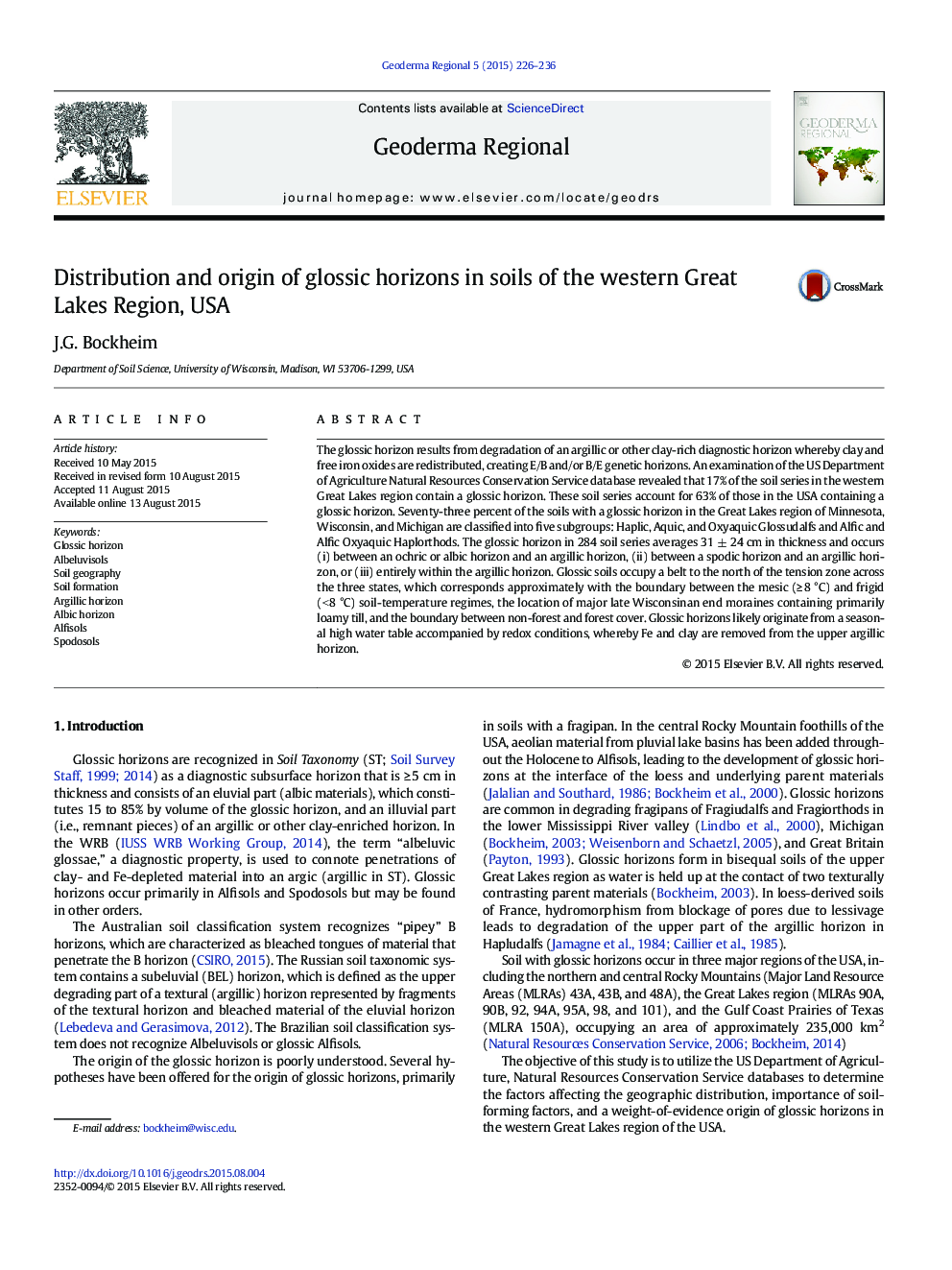| کد مقاله | کد نشریه | سال انتشار | مقاله انگلیسی | نسخه تمام متن |
|---|---|---|---|---|
| 6364152 | 1623010 | 2015 | 11 صفحه PDF | دانلود رایگان |
عنوان انگلیسی مقاله ISI
Distribution and origin of glossic horizons in soils of the western Great Lakes Region, USA
ترجمه فارسی عنوان
توزیع و منشاء افق های گلانی در خاک های منطقه دریاچه های غربی غربی، ایالات متحده آمریکا
دانلود مقاله + سفارش ترجمه
دانلود مقاله ISI انگلیسی
رایگان برای ایرانیان
کلمات کلیدی
موضوعات مرتبط
مهندسی و علوم پایه
علوم زمین و سیارات
فرآیندهای سطح زمین
چکیده انگلیسی
The glossic horizon results from degradation of an argillic or other clay-rich diagnostic horizon whereby clay and free iron oxides are redistributed, creating E/B and/or B/E genetic horizons. An examination of the US Department of Agriculture Natural Resources Conservation Service database revealed that 17% of the soil series in the western Great Lakes region contain a glossic horizon. These soil series account for 63% of those in the USA containing a glossic horizon. Seventy-three percent of the soils with a glossic horizon in the Great Lakes region of Minnesota, Wisconsin, and Michigan are classified into five subgroups: Haplic, Aquic, and Oxyaquic Glossudalfs and Alfic and Alfic Oxyaquic Haplorthods. The glossic horizon in 284 soil series averages 31 ± 24 cm in thickness and occurs (i) between an ochric or albic horizon and an argillic horizon, (ii) between a spodic horizon and an argillic horizon, or (iii) entirely within the argillic horizon. Glossic soils occupy a belt to the north of the tension zone across the three states, which corresponds approximately with the boundary between the mesic (â¥Â 8 °C) and frigid (< 8 °C) soil-temperature regimes, the location of major late Wisconsinan end moraines containing primarily loamy till, and the boundary between non-forest and forest cover. Glossic horizons likely originate from a seasonal high water table accompanied by redox conditions, whereby Fe and clay are removed from the upper argillic horizon.
ناشر
Database: Elsevier - ScienceDirect (ساینس دایرکت)
Journal: Geoderma Regional - Volume 5, August 2015, Pages 226-236
Journal: Geoderma Regional - Volume 5, August 2015, Pages 226-236
نویسندگان
J.G. Bockheim,
